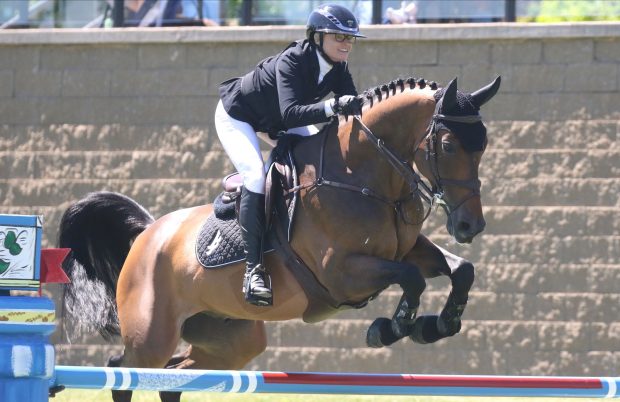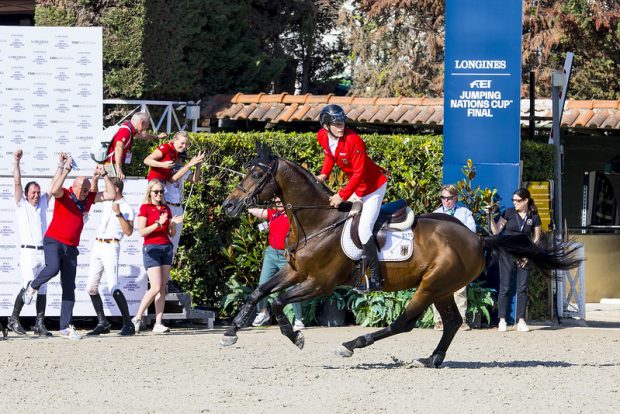We received an impressive response when we invited HHO users to contact Di about jumping queries or difficulties they may be experiencing. Although Di has done her best to help, she also stresses: “It’s almost impossible to help people from afar, so the first thing I’d suggest is going for training. I don’t mean only when things go wrong or once every three weeks, but as often as you can afford.
“The love the people who contacted me had for their horses really shone through and I can imagine that their animals have the best of everything, but it’s vital to budget for regular help, too.”
Di received several pleas for help from riders who are trying to turn ex-racehorses into show jumpers.
“You have to be clear in your mind that you couldn’t have two more different disciplines”, she points out. “And a less experienced rider taking on such a horse is not the best equation. The horse is being asked to change from going as fast as he can in a herd situation to competing alone in a sport where control and obedience is vital.”
So can such a horse be retrained for another discipline?
“It’s certainly possible up to a low level, but if a rider is serious about going up the grades, I would suggest buying a schoolmaster. After all, it’s about enjoying competitions,” says Di. “The old adage of horses for courses applies here — you wouldn’t play golf with a hockey stick.”
A recurring problem was that the horses enjoyed taking on fences.
“Many people said that their horses love cross-country, which they presumably relate to racing, but isn’t the ideal preparation for facing coloured poles,” says Di.
So if you believe that your former racehorse has talent, what can you do to stop him doing everything at speed?
“Try cutting down the amount of jumping you do at home,” suggests Di. “Instead of jumping every time, which means that your horse associates schooling with excitement, trot over poles on the ground as part of your daily routine. If you put the poles between wings, your horse will learn that wings don’t necessarily relate to jumping.
“Once he’s accepted that poles and wings aren’t a big deal and remains calm, build up to two or three very small single fences per session — but do remember that removing tension from your horse will take time and be prepared to go back a step at any stage.”
Transitions are also important.
“Do lots of transitions and school in and around fences,” says Di. “You could also jump on a circle, which gives you a shorter approach and stops the horse from anticipating the fence. If you manage a balanced approach and landing, you should continue the circle, then the horse can’t set itself and take you to the end of the arena.”
How do you judge when your horse is ready to compete?
“If you can jump a small course at home and keep your horse calm, you’ve got somewhere,” explains Di. “But I wouldn’t necessarily take him show jumping straight away. Try a low-grade dressage class, which will make him realise that going somewhere new doesn’t always mean galloping and jumping.”
- For lots more expert advice from Di Lampard on how to tackle common jumping problems see the current issue of Horse & Hound (6 November).



